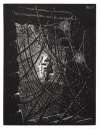Helene
Schjerfbeck
Helene Schjerfbeck, a Finnish modernist painter, transformed 19th century realism into a distilled, abstracted style. If you're looking for Helene Schjerfbeck original prints and editions for sale or would like to sell, request a complimentary valuation and browse our network's most in-demand works.
Helene Schjerfbeck art for sale
Discover Helene Schjerfbeck prints for sale, exclusively available through our private network of collectors. Explore signed and unsigned screenprints, lithographs, digital prints, and rare editioned proof prints by era-defining blue chip artists.
Sell Your Art
with Us
with Us
Join Our Network of Collectors. Buy, Sell and Track Demand
Biography
Born in Helsinki in 1862, Schjerfbeck showed artistic talent from a young age. Despite physical challenges resulting from a childhood injury, she pursued her passion for art. At the age of 11, Schjerfbeck entered the Finnish Art Society's School Of Drawing, marking the beginning of her artistic education.
Schjerfbeck's early career was marked by success and recognition. She received a travel grant from the Imperial Russian Senate in 1880, which allowed her to study in Paris. This experience exposed her to the vibrant art scene of late 19th century France, influencing her early style.
During her time in France and later in England, Schjerfbeck developed a Realist approach, painting outdoors and focusing on capturing the emotional qualities of her subjects. Her work from this period, such as The Convalescent (1888), highlights Helene Schjerfbeck's skill in capturing the tender, emotive moments of daily life. This painting, which depicts a young girl recovering in a wicker chair, demonstrates Schjerfbeck’s adept use of light and loose brushwork. The soft light falling on the girl’s face and hands, coupled with her contemplative expression, imbues the scene with a quiet sense of renewal and vitality.
Upon returning to Finland in the 1890s, Schjerfbeck’s work gradually moved away from detailed realism towards a more simplified, abstracted approach. This transition is evident in paintings like The Door (1884) and Silence (1907), where she began to reduce forms to their essential elements.
In the early 20th century, Schjerfbeck's career shifted dramatically as she withdrew from public life due to illness, moving to Hyvinkää, where she cared for her mother and focused on her art. Although her health limited her teaching career, Schjerfbeck continued painting, drawing inspiration from the secluded environment and her personal experiences. This period of isolation resulted in some of her most innovative work, including her renowned series of self-portraits.
These self-portraits, created over several decades, serve as a poignant chronicle of her life. From the naturalistic Self-Portrait of 1884-85 to the almost abstract renditions of her later years, these works reveal Schjerfbeck's unflinching exploration of the ageing process and her own mortality.
Despite her relative isolation, Schjerfbeck's work gained increasing recognition in the 1910s and 1920s. In 1913, Schjerfbeck formed a significant connection with art dealer Gösta Stenman. With his support, she expanded her exhibition reach, displaying her works in Malmö in 1914, Stockholm in 1916, and St. Petersburg in 1917. This collaboration played a crucial role in cementing her reputation as a leading figure in Finnish modernism. In her later years, Schjerfbeck's style became even more abstracted and expressive, as seen in works like The Skier (1909) and Girl from California (1919).
Schjerfbeck's printmaking, particularly her 1938 lithograph Sidenskon (Silk Shoes), reflects the same minimalist and abstract tendencies seen in her paintings. In Sidenskon, Schjerfbeck uses delicate, simplified lines to depict a young woman adjusting her shoes, emphasising form and silhouette over intricate detail. The figure is rendered with an economy of line, reflecting Schjerfbeck's mature style, which sought emotional resonance through abstraction. This print highlights how Schjerfbeck reduced her subjects to their most essential elements, paralleling her broader artistic journey towards abstraction.













